Retreat to Productora’s brutalist jungle hideaway
Casa Bautista is a piece of living sculpture in the Mexican jungle. Designed by Productora, the house is a combination of surrealist and brutalist inspirations
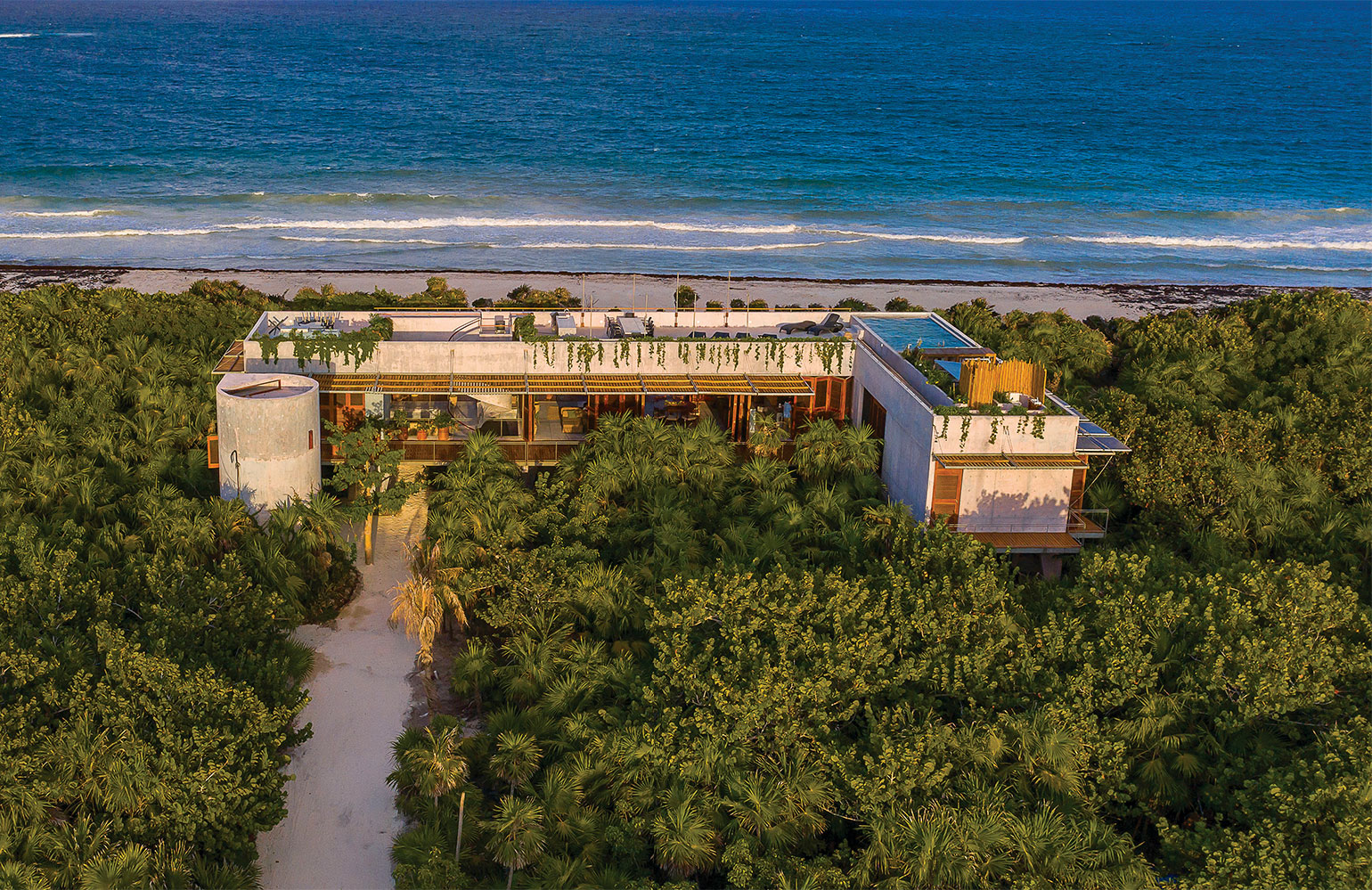
AS FEATURED IN THE WALLPAPER* DESIGN AWARDS 2020 ISSUE
Trekking into the thick jungle of Yucatan’s Sian Ka’an Biosphere Reserve, you might stumble across a blue concrete house embedded in the dunes overlooking the Caribbean Sea. Tucked away in a land that the Mayans called ‘Origin of the Sky’, Casa Bautista is a gatehouse to nowhere but nature, carrying both the whimsy of Edward James’ Las Pozas surrealist sculpture park, and the weight of a brutal fortress.
Supported by triangular pilotis, the house appears to hover in the tree canopy. Already crawling with vines and creepers, it could be an undiscovered mid-century modernist ruin. Yet it was only six years ago that two friends were cutting through the lush vegetation with machetes, looking for a piece of land wild enough for their wildest architectural fantasy: a surrealist retreat for friends immersed in nature. The pair, Victor Jaime, architect and director of Productora, and Ezequiel Ayarza, founder of Oaxaca- based organic coffee estate Pueblo del Sol, met by chance 18 years ago in a bar in Mexico City. Jaime was winding down after the day, and Ayarza had just arrived in the city from Argentina in the midst of the 2001 financial crisis. They bonded over a drink and a shared interest in architecture and escapism – Ayarza was a risk-taker full of ideas, and Jaime was to be the architect adventurous enough to design them.
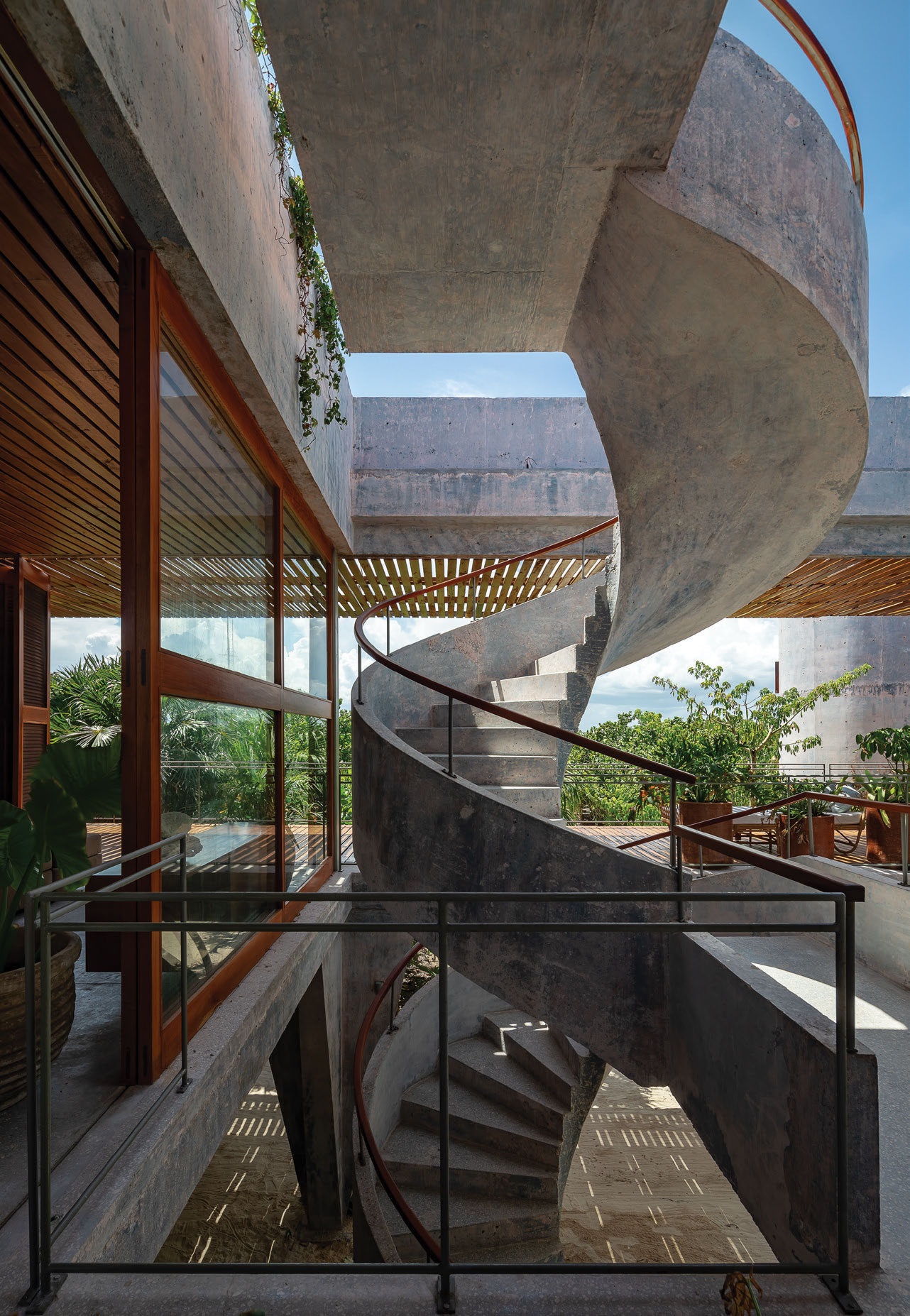
A central concrete spiral staircase links the house’s three levels – a beach-level storage area, the main living space, and a rooftop terrace with a pool
Plans for their clandestine plot took root, yet planning rules in the Sian Ka’an eco-reserve meant the house could only cover 300 sq m and rise to 8m (as high as the tree canopy), while any clearing of the jungle was to be limited to the building’s perimeter. It was these restrictions that inspired the three-level house wrapped in timber pergolas, with a rooftop pool and dining area that place you in the midst of nature, sea and sky. At ground level is a covered, shady area for storing beach equipment, below the raised main living level, which houses expansive dining and living spaces and ve generous bedrooms. Casa Bautista is designed by friends, for friends: ‘It’s a place for hospitality – everyone is invited,’ says Jaime.
Crafted by local carpenters in tzalam timber, a system of lightweight pergolas and terraces softens the otherwise brutalist building and creates additional living space, while providing shade and humidity control. Inside, the house offers spaces of intrigue and surprise, including ‘a secret door that leads you to a hidden mezcal cellar’ and a concrete cylinder connected to the house by a timber bridge, ‘conceptualised to be like entering a turbine’, says Jaime. With this cylinder, the triangular pilotis and an external spiral staircase, the house is like a piece of living sculpture in the jungle. ‘Productora has always been interested in simple forms, and their contrast to the surrounding landscape,’ adds the architect. The practice’s built work includes Teopanzolco Cultural Center (2017) in Cuernavaca, with its platform and stepped auditorium inspired by Mayan ruins; and the Fleischmann Residence (2018) in Los Angeles, where a street-facing triangular pitched roof shifts into a colossal blue steel grid.
At Casa Bautista, the architectural artistry extends to the materiality of the concrete, as well as its colour, dyed blue as an ode to the sea and the sky. ‘It belongs to the site like a rock discovered by the water,’ says Jaime. Speckled with pale turquoise, cerulean and oyster grey, the surface is textured and reflective. At dusk, when guests find their way to the roof to dine under a pink sunset, the sand turns moonlight grey, the jungle intensifies and the house turns purple. ‘We like to think that our projects are both of our time, and timeless, because they talk about essential things such as awe, emotion, light and shade, and the environment,’ says Jaime of this unique beach house that is sure to be filled with friends all year long.
INFORMATION
productora-df.com.mx
casabautistatulum.com
Receive our daily digest of inspiration, escapism and design stories from around the world direct to your inbox.
Harriet Thorpe is a writer, journalist and editor covering architecture, design and culture, with particular interest in sustainability, 20th-century architecture and community. After studying History of Art at the School of Oriental and African Studies (SOAS) and Journalism at City University in London, she developed her interest in architecture working at Wallpaper* magazine and today contributes to Wallpaper*, The World of Interiors and Icon magazine, amongst other titles. She is author of The Sustainable City (2022, Hoxton Mini Press), a book about sustainable architecture in London, and the Modern Cambridge Map (2023, Blue Crow Media), a map of 20th-century architecture in Cambridge, the city where she grew up.
-
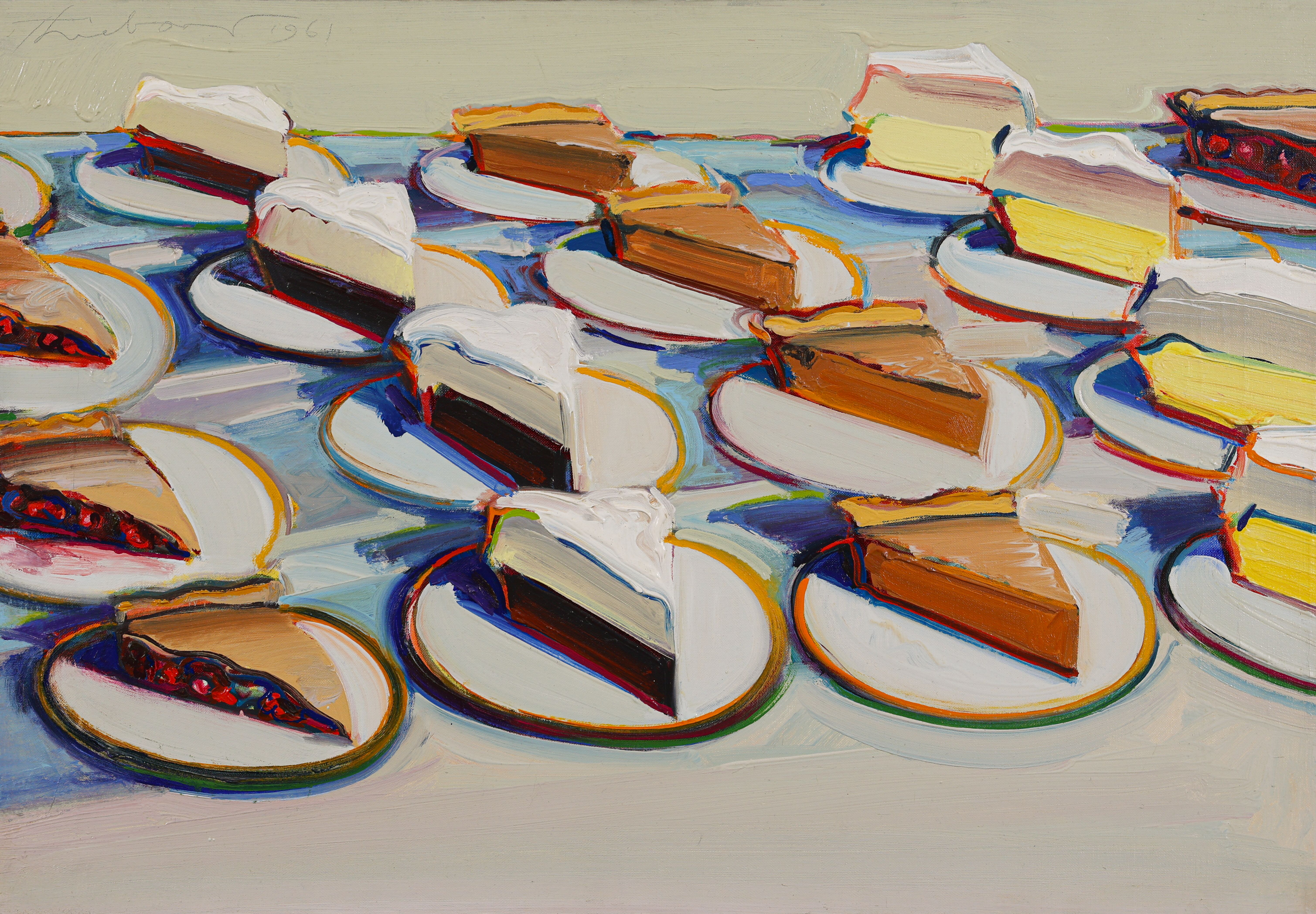 Why are Wayne Thiebaud’s paintings at the Courtauld quite so tempting?
Why are Wayne Thiebaud’s paintings at the Courtauld quite so tempting?The American artist’s thickly painted slices of cake at the Courtauld are some of our favourite artworks seen this year. What makes them so special?
-
 Taiwan’s new ‘museumbrary’ is a paradigm-shifting, cube-shaped cultural hub
Taiwan’s new ‘museumbrary’ is a paradigm-shifting, cube-shaped cultural hubPart museum, part library, the SANAA-designed Taichung Green Museumbrary contains a world of sweeping curves and flowing possibilities, immersed in a natural setting
-
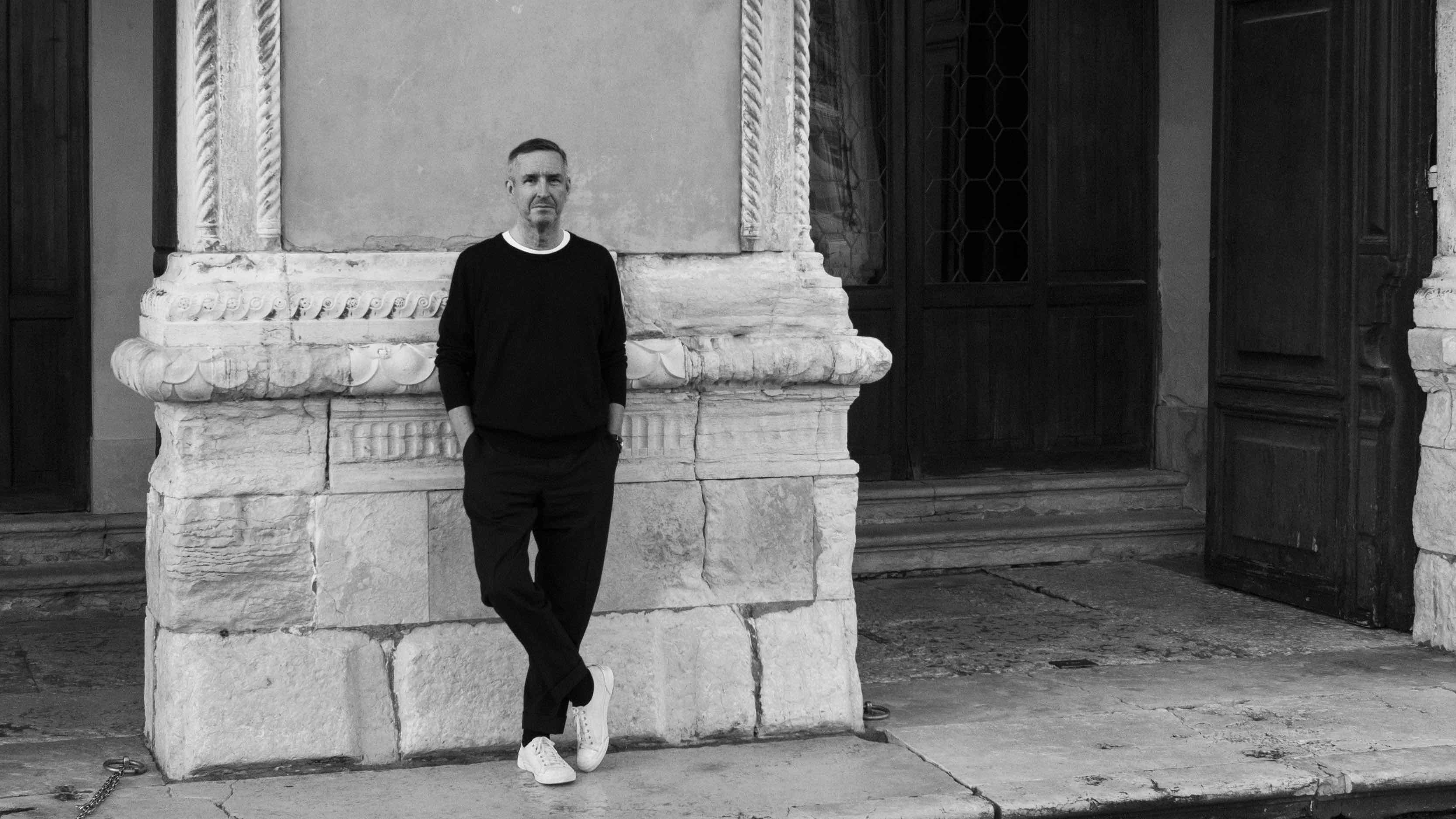 Dries van Noten on why he's building a new home for craft in Venice
Dries van Noten on why he's building a new home for craft in VeniceA year after departing the runway, Dries van Noten unveils his next chapter: the Fondazione Dries Van Noten, a newly announced cultural initiative in Venice celebrating craft in all its forms. Wallpaper meets the designer to find out why he’s not ready to retire.
-
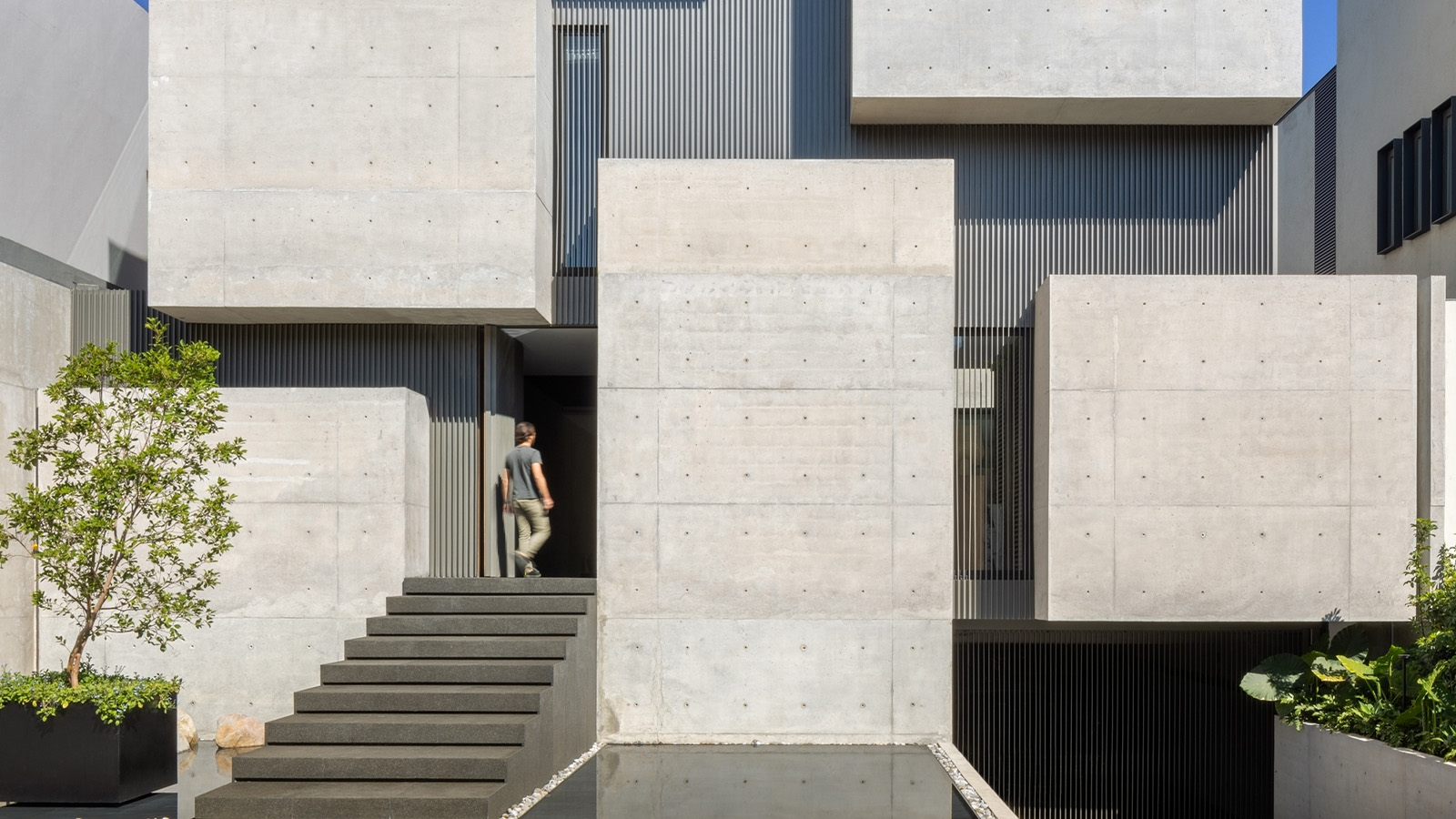 A cubist house rises in Mexico City, its concrete volumes providing a bold urban refuge
A cubist house rises in Mexico City, its concrete volumes providing a bold urban refugeCasa Ailes, a cubist house by Jaime Guzmán Creative Group, is rich in architectural expression that mimics the dramatic and inviting nature of a museum
-
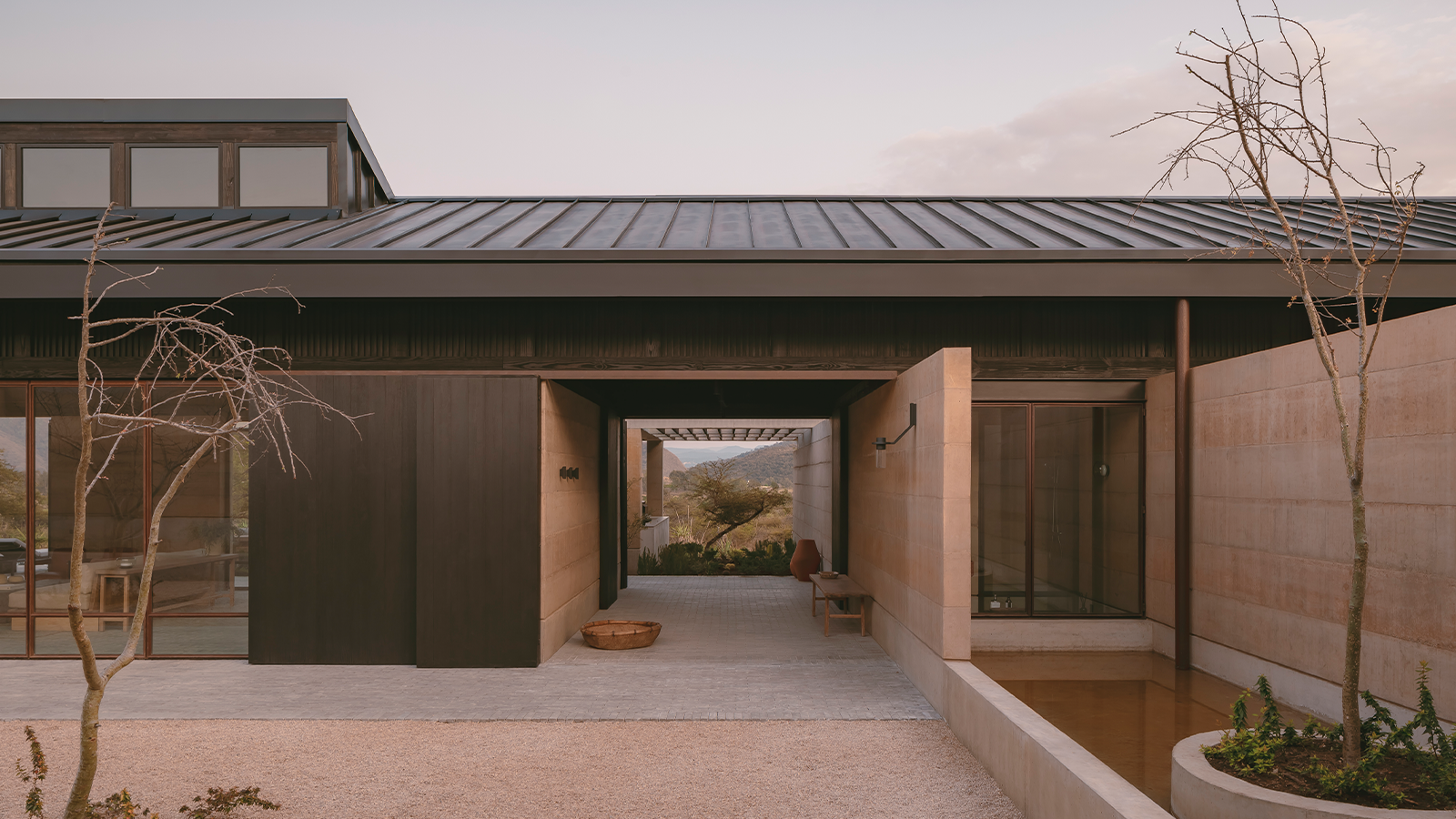 Serenity radiates through this Mexican home, set between two ravines
Serenity radiates through this Mexican home, set between two ravinesOn the cusp of a lakeside town, Mexican home Casa el Espino is a single-storey residence by Soler Orozco Arquitectos (SOA)
-
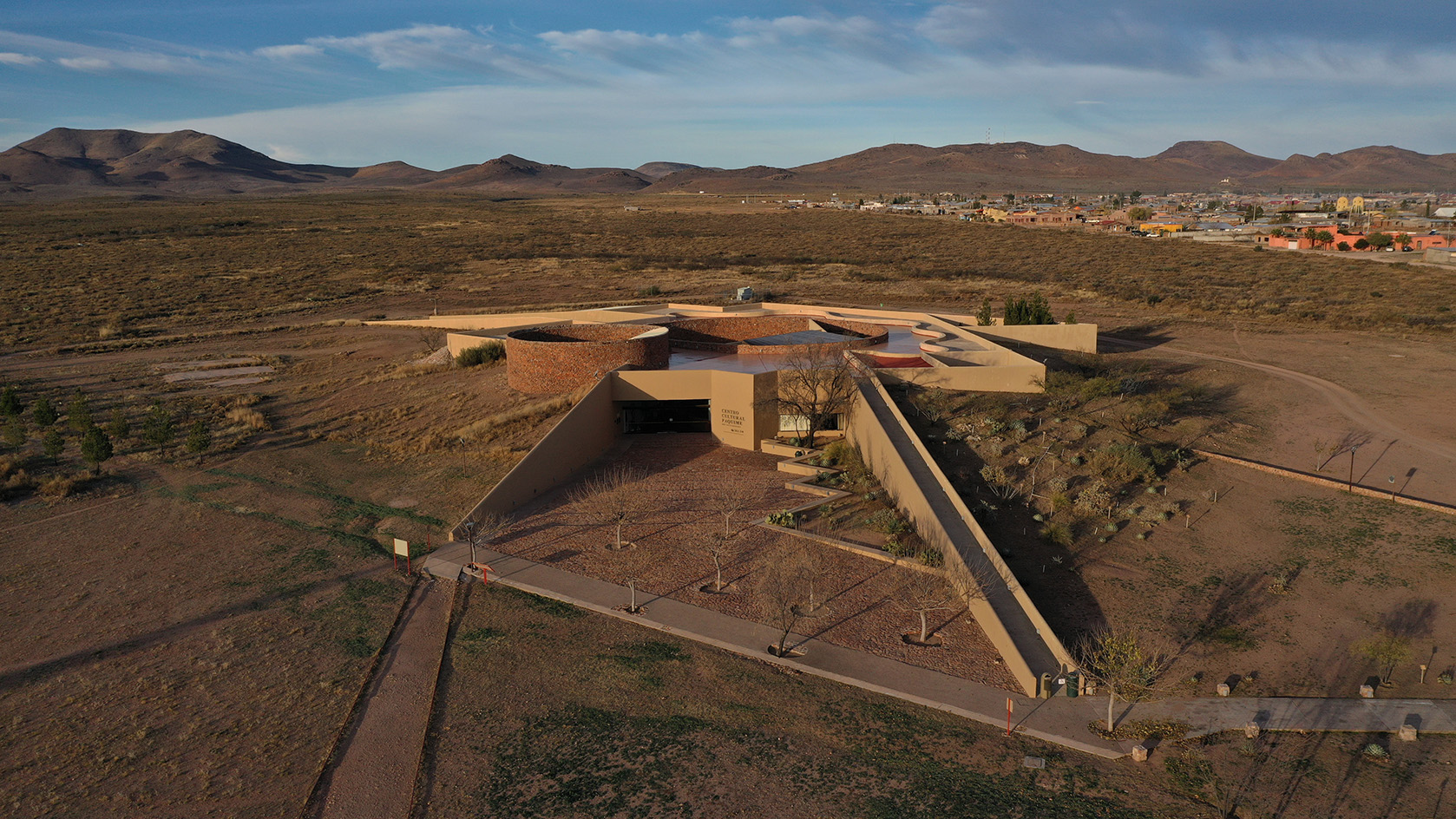 Mexican landscape architect Mario Schjetnan's Grupo de Diseño wins 2025 Oberlander Prize
Mexican landscape architect Mario Schjetnan's Grupo de Diseño wins 2025 Oberlander PrizeThe 2025 Oberlander Prize goes to Mexican landscape architect Mario Schjetnan and his studio, Grupo de Diseño, highlighting the creative's motto: 'We have a human right to open space'
-
 The Architecture Edit: Wallpaper’s houses of the month
The Architecture Edit: Wallpaper’s houses of the monthThis September, Wallpaper highlighted a striking mix of architecture – from iconic modernist homes newly up for sale to the dramatic transformation of a crumbling Scottish cottage. These are the projects that caught our eye
-
 A Mexican clifftop retreat offers both drama, and a sense of place
A Mexican clifftop retreat offers both drama, and a sense of placeCasa Piscina del cielo, a clifftop retreat by Zozaya Arquitectos, creates the perfect blend of drama and cosiness on Mexico's Pacific Coast
-
 Broken up into six pavilions, this brutalist Mexican house is embedded in the landscape
Broken up into six pavilions, this brutalist Mexican house is embedded in the landscapeSordo Madaleno’s brutalist Mexican house, Rancho del Bosque, is divided up into a series of pavilions to preserve the character of its hillside site, combining concrete, curves and far-reaching views
-
 The Architecture Edit: Wallpaper’s houses of the month
The Architecture Edit: Wallpaper’s houses of the monthWallpaper* has spotlighted an array of remarkable architecture in the past month – from a pink desert home to structures that appears to float above the ground. These are the houses and buildings that most captured our attention in August 2025
-
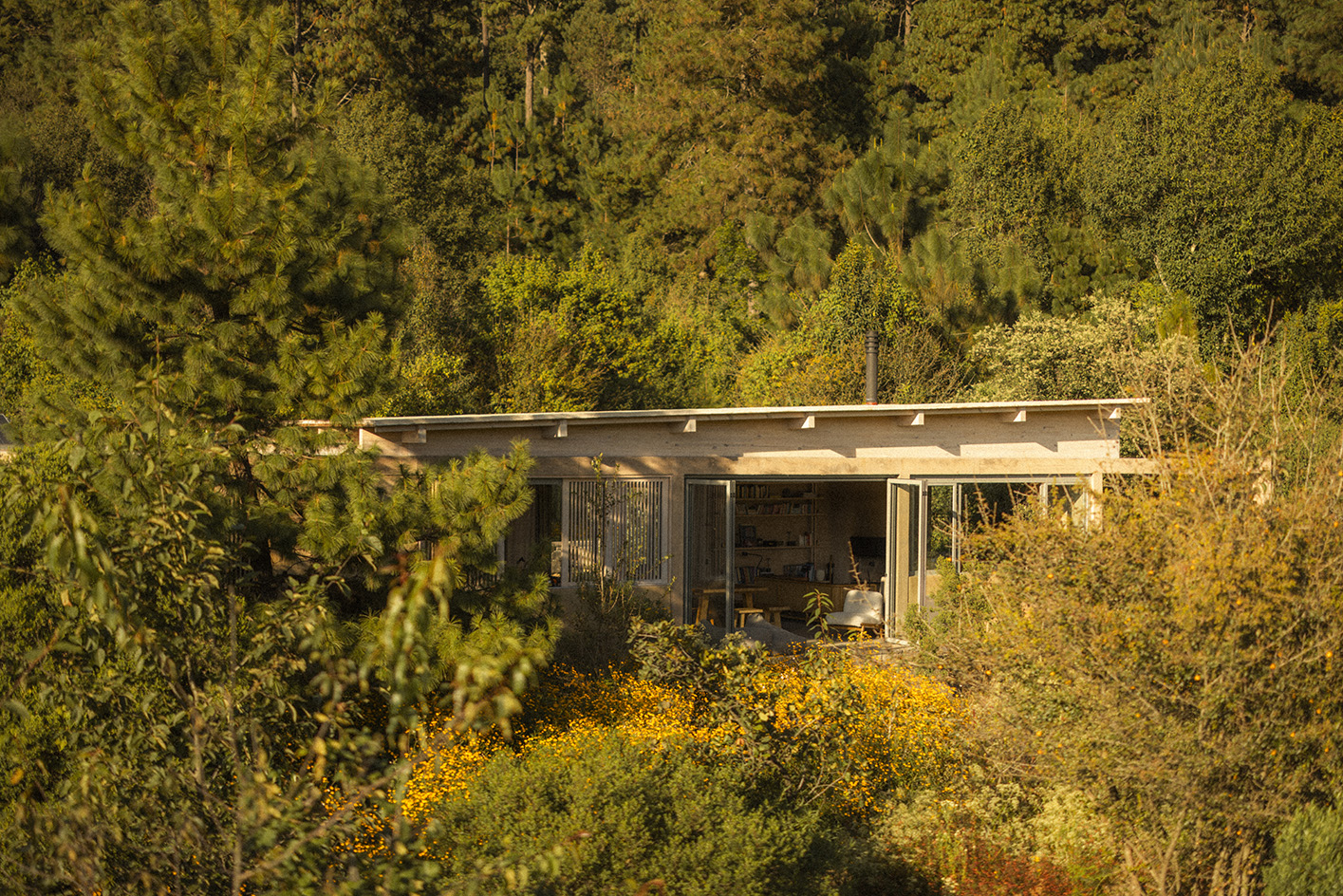 Estudio Ome on how the goal of its landscapes ‘is to provoke, even through a subtle detail, an experience’
Estudio Ome on how the goal of its landscapes ‘is to provoke, even through a subtle detail, an experience’The Mexico City-based practice explores landscape architecture in Mexico, France and beyond, seeking to unite ‘art and ecology’